RECAP: Twentynine Palms Planning Commission, November 4, 2025
Food insecurity joins the discussion on co-op gardens and animal regulations

Whether it was due to election day, the time change, shutdown exhaustion or a beautiful desert evening, on Tuesday the Planning Commission discussed four issues with long-term City impacts before an audience of four, with only one person commenting. Temporary Use Permits, Smog Checks, Animal Regulations and Co-op Gardens returned to the Commission with consensus sought so that staff could dive into writing the code.
Our agenda preview is here and a mere six minutes of video can be viewed here as cameras were shut off for the study sessions that made up most of the 90 minute meeting.
Food insecurity exacerbated by the government shutdown was raised by Vice Chair Alex Garcia during reports on meetings attended:
Last week, I helped with food distribution, packing and whatnot, and then this morning, helped with the food bank at CMC for FIND Food [Bank]. Very disheartening with how little food they had and how long the line was. Yeah, our community is greatly affected by food scarcity.
The Desert Trumpet covered the status of food banks on Wednesday.
Planning Commission Holiday Schedule
Community Development Director Keith Gardner’s report focused on the Planning Commission meeting schedule for the balance of 2025. The November 18 meeting is cancelled due to a development application still being in process and the December 2 meeting conflicts with the City’s holiday celebration, making the December 16 Planning Commission meeting both the next and final meeting of 2025.
STUDY SESSION
The questions at stake for each item were examined in depth in our agenda preview, so we will focus here on the discussions of those items.
Smog Checks
The Commission appeared divided on whether smog check facilities that do not include auto repairs could be shoehorned into an existing category, Drive-Through Sales & Service, Non-Food (AUP), per the majority consensus at the October 21 study session. The category is undefined under current code and is a land use accepted under the Downtown Specific Plan. Although intent is difficult to ascertain, it’s likely the category was meant to cover drive-through windows at banks — a use that is tourist friendly — whereas few visitors use their limited time in Joshua Tree National Park to smog check their cars.
The other option — the preference of Chair Jessica Cure and Commissioner Leslie Paahana — is to create a new land use category for smog check stations. That would keep smog checks out of downtown, due to the category being created after the 2022 Downtown Specific Plan.
The item is prompted by a request from property owner Wendy Sundberg to allow a smog check facility at the former Motor City car lot at the southeast corner of Adobe and Hwy 62 (73709 Twentynine Palms Hwy), which is also the last corner available for redevelopment at Four Corners.
An exchange between Community Development Director Gardner and Chair Cure illustrated the conflict:
Cure: I didn’t agree [with the prior majority consensus] on the sense that we didn’t like the precedent that it set. We would rather change the definition. But I do also want to be able to see something go into that building and not be sitting….
Gardner: It’s bigger than one building.
Cure: I know. And so that’s the conflict there, and that’s why there was the no on that.
So why has that parcel been underutilized for so long? The active businesses at that intersection are prominent: Starbucks, Bennys and 7-11. Desert Trumpet has learned that prior to the corner being Motor City, it was a Texaco gas station. It’s likely that underground tanks remain, with a possible hazardous waste liability risk, which effects potential site uses. We contacted Sundberg to inquire about the tanks and she declined to answer whether any were still on site.
Sundberg is the daughter of Chuck Donaldson, who, historically, was the largest property owner in downtown Twentynine Palms. The Donaldson family still controls multiple downtown parcels.
Temporary Use Permits
Discussion of Temporary Use Permits (TUPs) was kicked off by a point-by-point review of consensus reached at the October 7 Planning Commission meeting to reconfirm the Commissioner’s positions:
For commercial or industrial zoned property, staff is proposing that events be allowed for a maximum of 28 days per year per parcel with no limit on the number of events.
The Commission affirmed this change as well as suggested an avenue for additional events on commercial or industrial zoned property via an Administrative Use Permit (AUP) that would allow 29 to 45 days of events or a Conditional Use Permit (CUP) that would add 46+ days or more of events.
For residentially zoned property, a maximum of four events are allowed per calendar year.
The Commission affirmed the 4 event limit for a TUP and added an avenue for additional events in residential zoning via an an AUP that would add 5 to 8 days of events or a CUP that would add 9+ days of events.
Revising the code to identify which types of events will be allowed in each zoning district.
The consensus of the Commission is to not be so restrictive as certain types of events would already be limited due to fire codes or other regulations should they be impractical for a certain lot size (such as a circus or rodeo on a 1/4 acre lot).
Revising the code to clarify when an Administrative Use Permit would be required and when a Conditional Use Permit would be required.
As requested by the the Commission, staff created a table identifying the thresholds, which was adjusted as discussion warranted.
Additional discussion focused on:
The number of days at the different levels: At what point does event frequency prompt classification as an event center? Gardner said,“if you’re going to have more than 46 days of events, you’re an event center, and you should be expected to put in the parking and trash enclosures.…” It should be noted though, that 46 days is fewer than one event per week and many businesses feature weekly events without being “event centers.”
Clarification on what improvements are required for an AUP: Commissioner Max Walker brought up the example of a business celebrating its 15th anniversary with special events five days a month for a year. Should a one-off event prompt full street improvements? Gardner clarified that improvements such as “enough restrooms, sanitary facilities and emergency access” might be required. While the word “safety” was added to the AUP, the actual improvements required did not change.
How much information regarding planned events would be required at the initial application and how many applications might be needed: Chair Cure queried:
So saying 29 to 45 days. Do I have to now know every single one and apply for every single thing and know exactly my schedule? Or am I just saying I am now having being authorized to be able to have events within this time frame? Or do I have to get every single thing approved?
The Commission leaned toward a single application for the time frame, although also noted that the chart needs additional work to clarify the application process.
The definition of “event” proposed as:
An activity that is temporary in nature, is open to the public, may exceed normal parking needs, may be a use that is not typically found in the land use district or is outside the normal business activity.
Gardner clarified that the primary purpose of the definition is to distinguish public events from sports parties or types of events that are private in nature. The Commission agreed with the definition with the additional informational clarification for TUPs that if an event involves selling tickets or alcohol a TUP is required.
Animal Regulations
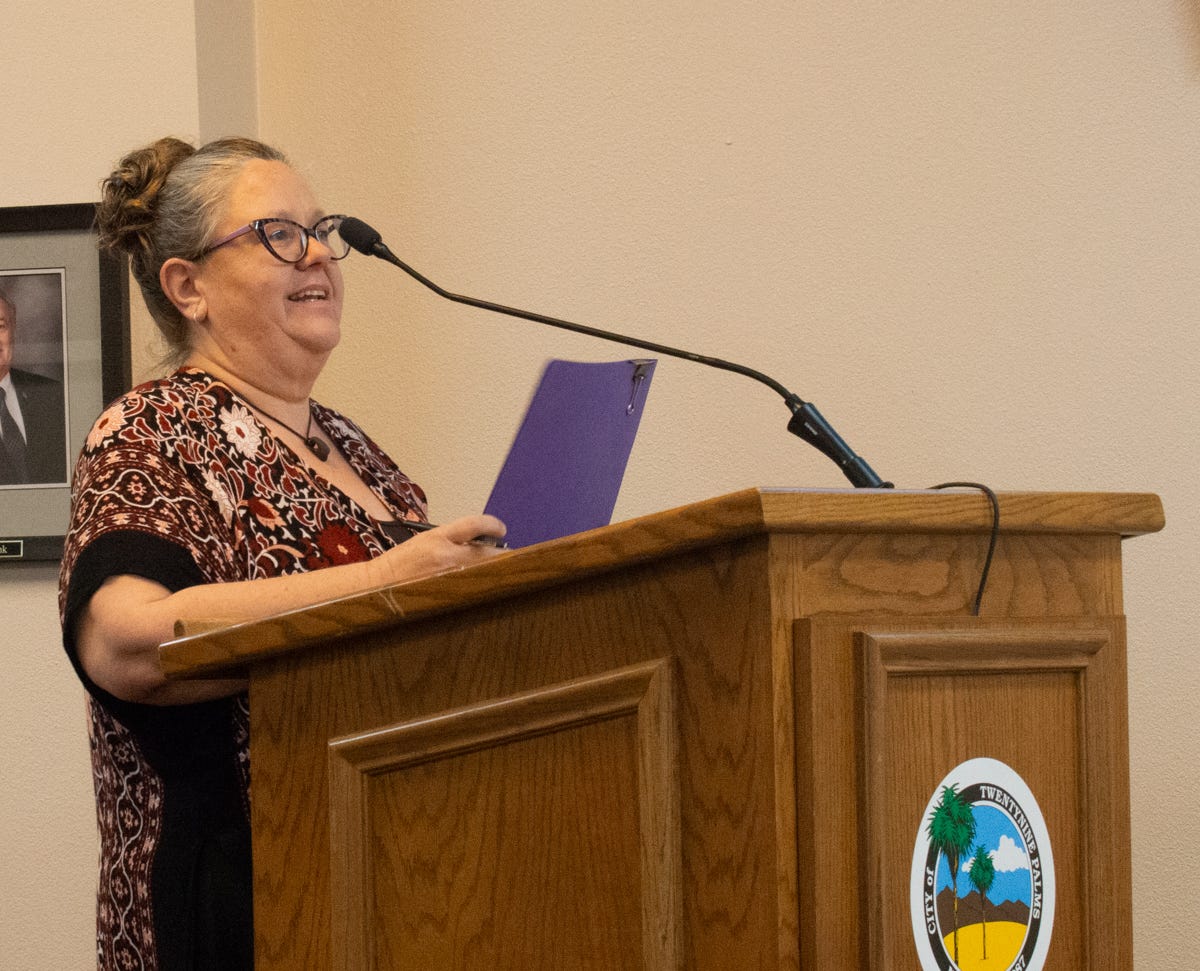
This item opened with public comment by Heather Drake, who expressed concern that chickens were not mentioned in the code discussion:
I would like to ask that small backyard chicken flocks remain permitted in normal sized backyards that are within the City limits, which is currently what is permitted with San Bernardino County overall. Roosters don’t need to be permitted in neighborhoods because they’re noisy and do not produce eggs.
Commissioners then reconfirmed previous decisions that the number of allowed animals should be based on acreage not zoning, even if the residence is in a commercial zone, and if located in an equestrian overlay, then then an increase in the number of horses per parcel would be allowed.
Commissioners also reconfirmed that Animal Control will handle permitting for the keeping of exotic animals and for dogs, cats and pigs in excess of current regulations and that references to home kennels / catteries be removed from residential zoning since private breeding of dogs and cats is not a permitted land use in the City.
What about chickens?
Vice Chair Garcia circled back to Ms. Drake’s comment verifying that “we’re not doing anything with chickens or anything like that,” prompting Assistant Planner Diane Olson to clarify that chickens are allowed on a minimum one-acre parcel. Commissioner Paahana added that would mean that residents could not keep chickens on a 1/4 acre parcel. Chair Cure then chimed in that she would like to see chickens allowed on smaller parcels, “because I think that is an option for ability to have more food stability and options on a home” and recommended reviewing the acreage recommendations overall.
Cooperative (Co-op) Gardens
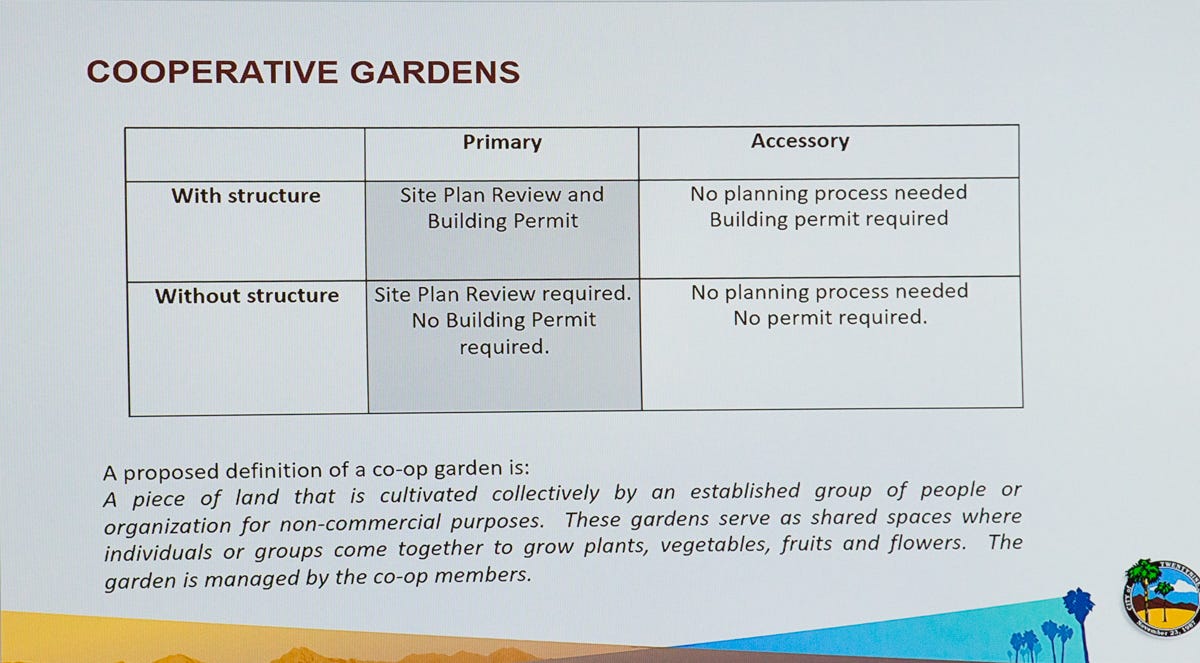
Heather Drake also spoke to this item in public comment:
I would simply ask that the Planning Committee consider placing no regulations at all on community gardens, at least at this time. I propose that, given the political and economical instability our nation is experiencing, coupled with the fact that many residents of Twentynine Palms already struggle with food insecurity — the recent interruption of SNAP benefits — that no obstacles should be placed in the way of anyone who wants to grow food for a non-commercial capacity..
I would also ask that small greenhouses, shade structures, windbreaks and the like, be exempt from any regulations or permitting as well. Growing food in this desert environment requires certain growing methods and techniques in order to produce any produce.…People have been developing utilizing these methods of growing food in desert environments for literally thousands of years, and I think they should be allowed to continue to do so.…
I feel that many of us agree that food is a human right, and in the City of Twentynine Palms, we should be allies and partners in any effort to feed the citizens, not overseers or obstacles.
To be clear, the item being discussed is a land use category where the garden is the primary use as opposed to a secondary use adjacent to a building as might be the case with a private garden at a private residence. The discussion by the Commission concerned gardens created by and serving cooperative groups. A distinction was also made between “community” gardens and “cooperative or co-op” gardens, with community gardens usually being managed by a jurisdiction such as a city.
Commissioner Walker felt that the amount of recommended regulation, such as requiring a site plan review for a cooperative garden without a greenhouse, was excessive:
For a primary use, I don’t see why we’re going to require a site plan review…I don’t see why we’re going to hinder them and make more rules and more hurdles, and cost more money if somebody wanted to get four of their neighbors together, and this empty lot that the owner said, we can have a garden, we got to, we got to come together with money to do a site plan review. And I don’t agree, but that’s what we’re saying here in this chart.
Commissioner Krushat clarified further that they are referring to “people getting together, they grow and share the vegetables or the produce that they can make. They don’t sell at the downtown farmers market.” Commissioner Garcia also chimed in concerning the general scarcity of food, “this is food, and right now, with food, it’s extremely scarce and it’s kind of ridiculous. I think there should be as express way as possible. So I don’t see the point of a site plan review without a structure.”
While Commissioners were in favor of allowing an accessory structure, such as a greenhouse, without a primary structure, such as a house, Diane Olson cautioned that such changes affect the entire code, for instance, currently building a garage requires a house as a primary structure.
You have to remember that when you make these kind of changes, it affects the entire code. So if you’re going to say that someone can build an accessory structure without a primary structure, it’s going to affect every type of land use, because you can affect the entire code like currently, if you want to build a house or if you want to build a garage, you have to have a house, you have to have a primary use first. So if you’re going to make some changes like that, you have to consider the effect that it will have on the entire code.
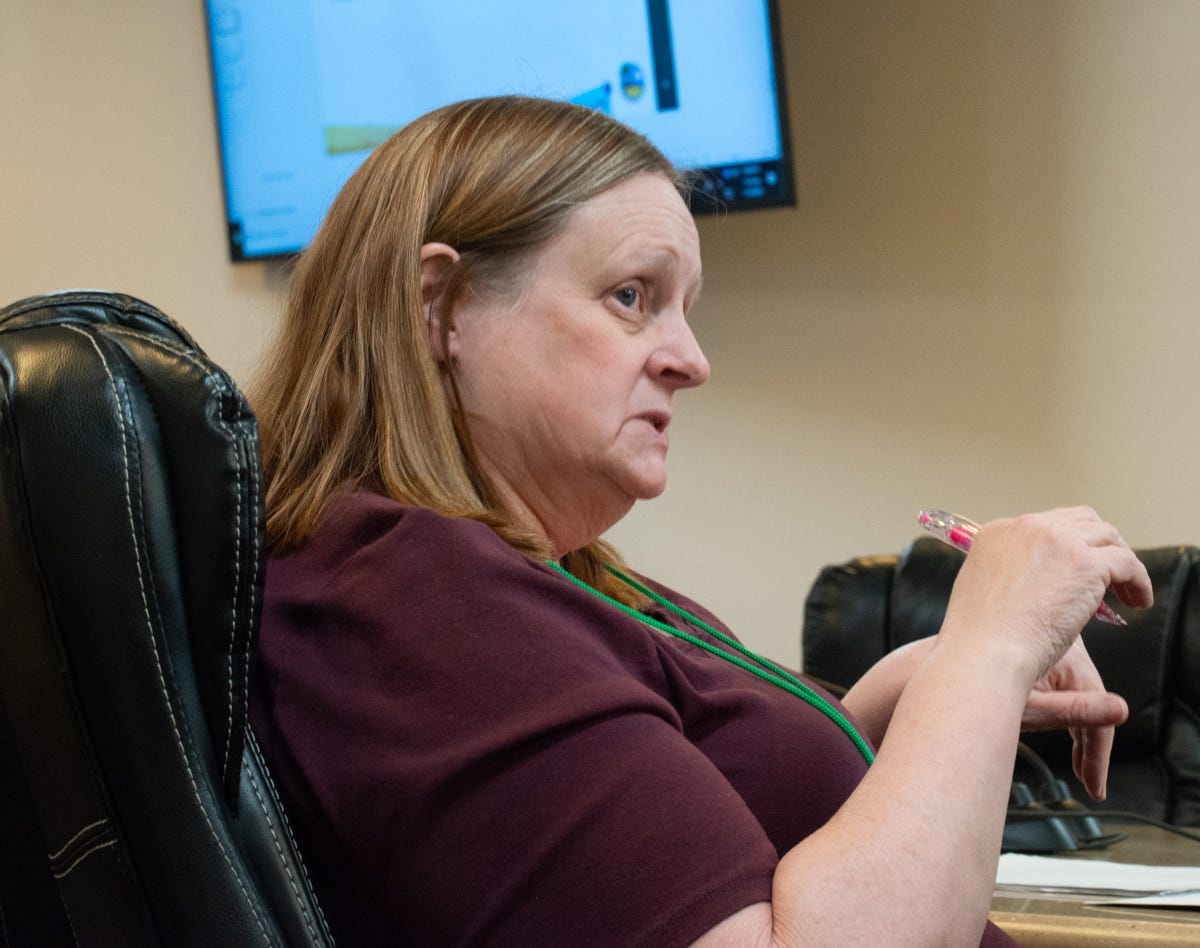
Structures under 120 square feet usually do not require a building permit. However, the question of how to have a cooperative garden as a primary use with an accessory greenhouse without over-regulating stymied the Commission. At one point Gardner reminded them, “the reason why we’re kind of a stickler on the whole accessory versus primary thing is because we’ve had illegal grows out there…and abandoned structures and abandoned projects.”
Garcia and Cure wondered if it were possible to create a separate code to solve the issue of greenhouses without a primary structure with Cure proposing and Gardner countering:
Cure: Can it be separated? So that way, if the primary use with a structure is a co- op, then that’s the only use that could be a primary use that’s not having to have the priorities be the main commercial or single family home
Gardner: right now, our position is, you can’t have an accessory structure without a primary structure
Cure: I know, but if you change this one, does it change all of them? Which is what Diane had said.
Diane Olson clarified code again:
If you have a residential zone, your primary use is always a residence. So anything else that comes after, a detached garage, a pool house, a storage building, a greenhouse, all those, those are considered accessory uses. Those are never considered a primary use in a residential zone.
Garcia wondered if a zoning clearance, the step prior to a site plan and building permit, with the qualification that it was only for creating a separate avenue for cooperative gardens with greenhouses was the answer.
And with that Community Development Director Gardner tagged the issue for further study, and a likely fourth study session.
We welcome your comments! Please note that we do not allow anonymous comments. Please be sure your first and last name is on your profile prior to commenting. Anonymous comments will be deleted.
Feel free to share this article!
We are $95 away from $7000 in paid subscriptions! Who’s going to take us over $7,000? Upgrade to a paid subscription for just $5 per month or $50 per year.
Would you care to donate more than $100? Our Paypal account is up and running!



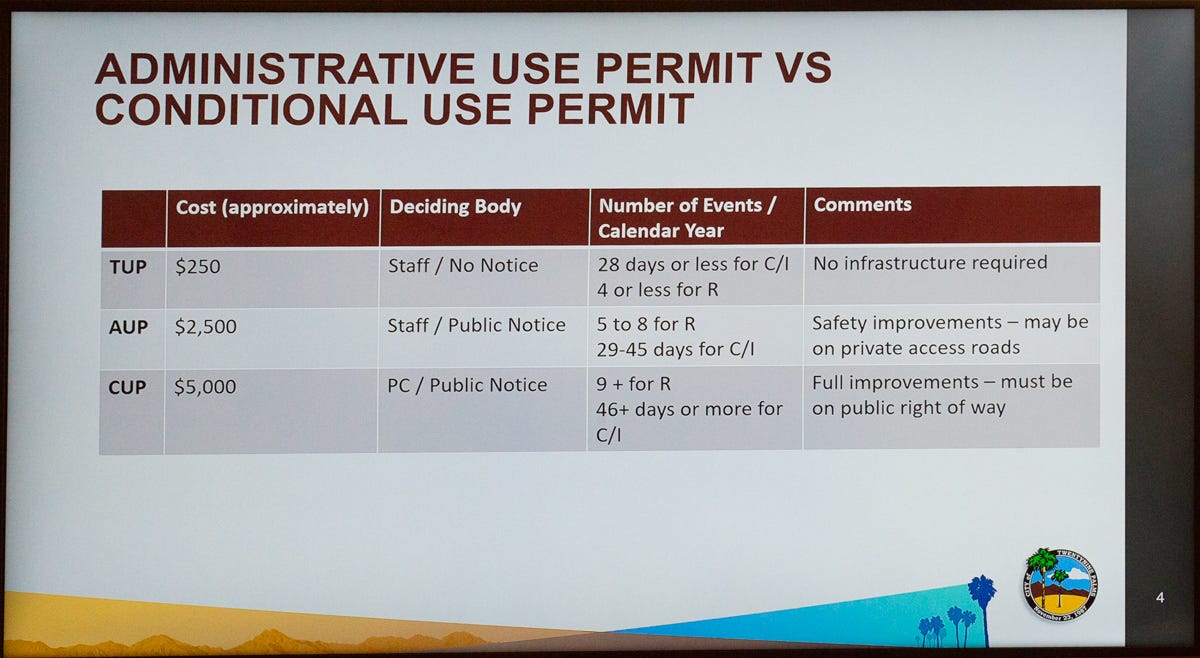
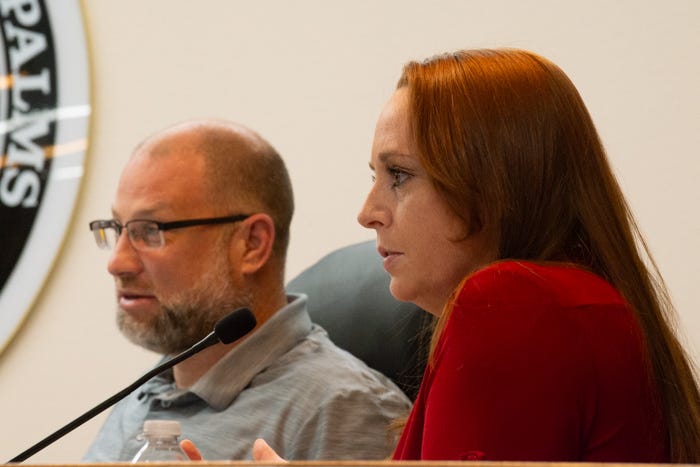
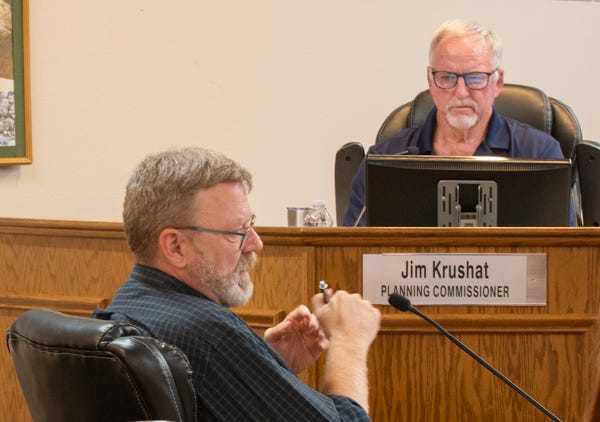

Chickens: anyone that thinks that having backyard chickens will save them money has to really think that through. It’s actually more costly than store bought. The cost of building a coop, watering system, predator proofing, the cost of feed, the cost of the chickens themselves and in 29 the cost of shading in summer and warmth in winter is a factor.
All of that being said, I have had chickens for over 60 years and have it down to a science where I’m at a break even and have the freshest eggs.
And keep in mind that if you are not an early riser and a disciplined chicken owner don’t get them. Feed at 6am and 4pm, clean chicken poop up every day, deal with the occasional death. Just go to the store for your eggs.
Community gardens: community gardens are a feel good endeavor, rarely is there enough produce to offset your food bill compared to the time you have to put in. Gardening in the desert is difficult, for many of the same reasons that chickens are. And community gardens in the desert are not like gardens in San Diego or Florida where the extremes are not as severe. Add to that those particular garden members that do the least amount of work and want the most produce(you know who I’m talking about)
And the subject of the under 120 sqft structure, yes they can be built without permits, sort of, if you bring power or water to them they require permits. And setbacks and easements may need to be taken into consideration.